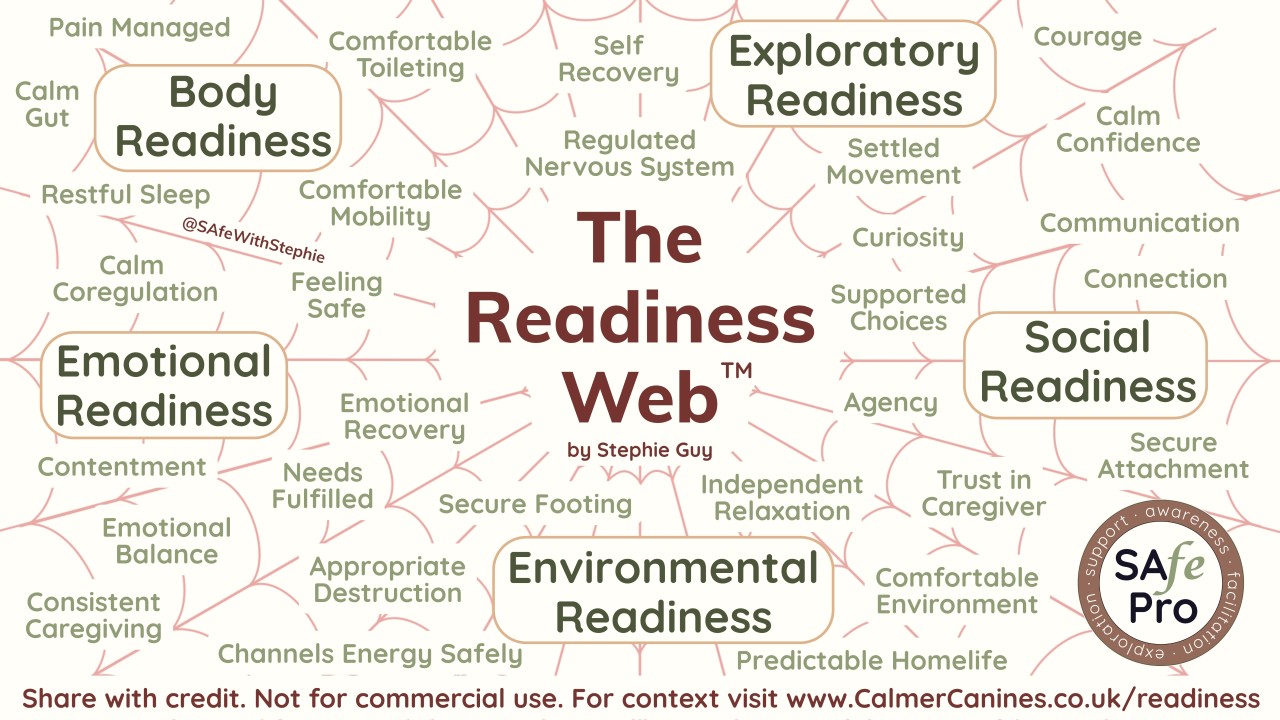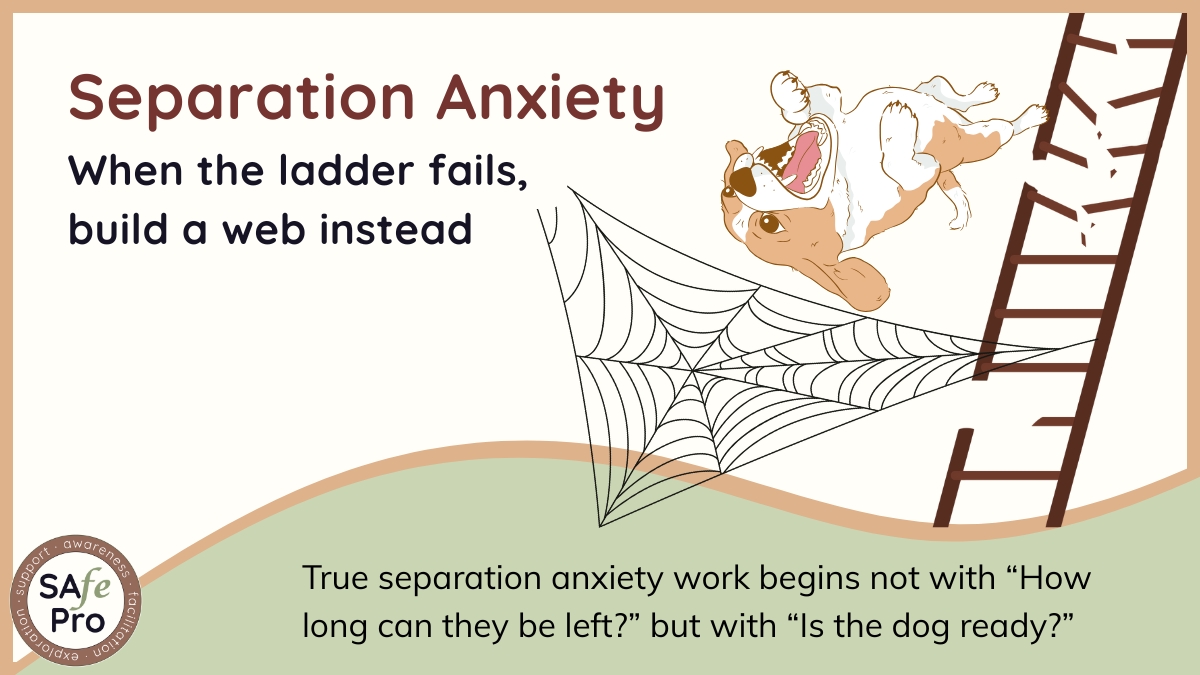In the first blog of this three part series, I talked about how separation anxiety isn’t really about time. What looks like a “minutes apart” problem is actually something much deeper, more like an iceberg. The behaviours above the surface are what we see, but the real drivers are hidden below.
In this post, I want to take you a step further. Let’s move from the iceberg to the web. Because once you see separation anxiety as a web of interconnected needs, it becomes much clearer how to help.
Looking below the surface
Above the waterline are the behaviours that everyone recognises - barking, howling, destruction, toileting, pacing. They’re dramatic, often distressing, and they’re the reason families ask for help.
But as we know, the visible behaviours are just the tip. Beneath the surface are the hidden roots - pain, gut distress, disrupted sleep, sound sensitivities, trauma, chronic stress, insecure attachment, loss, lack of agency, human anxiety.
These are the strands that shape a dog’s daily experience. And here’s the key - if a dog is already struggling with these challenges when their family is at home, they won’t be able to manage when they’re left alone.
Why a straight line doesn’t work
Traditional separation anxiety training gives families a ladder to climb. First one step, then the next, then the next. Ten seconds, twenty seconds, thirty seconds. It’s neat and reassuring, but life with dogs rarely follows a straight line.
Dogs don’t live in controlled laboratory conditions. They live in busy households, with fluctuating routines, visitors, house moves, children, other animals, pain flare-ups, broken nights. A straight line doesn’t hold when real life knocks it sideways.
That’s why I don’t use ladders. I use a web.
The Readiness Web (TM)
A web holds when all of its strands are intact. For dogs, those strands might include:
- Pain being managed
- Gut calm and comfortable
- Restful, restorative sleep
- A regulated nervous system
- Caregivers who feel supported and steady
- Courage to explore the world at their own pace
- Safe spaces to retreat to
- Daily opportunities for agency and choice
Each strand strengthens the whole.
But here’s the thing - when one strand breaks, the web weakens. It might be an arthritis flare, a stressful house move, a bout of poor sleep, or even tension in the family home. The dog suddenly feels less able to cope, and the visible behaviours return.
The answer isn’t to go back to the stopwatch. The answer is to repair the strand. Once the web is rewoven, the whole picture becomes stronger again, and the dog can cope with being alone.

Why this shift matters
Seeing separation anxiety as a web changes the conversation. Families no longer blame themselves for failing the ladder test. Instead, they can look at their dog’s life and ask, which strand needs support right now?
It’s empowering. It gives them permission to stop drilling absences and start meeting needs. And it helps professionals guide them with clarity and compassion.
What’s coming next
In the next post, I explore why repetition so often backfires, and how ACE (Animal Centred Education) give us a way forward. We look at how Free Work, observation, and taking the pressure off help dogs rebuild the confidence and resilience they need.
Because building the web is only the start. How we support and strengthen it in everyday life makes all the difference.
Using the Readiness Web™
You’re welcome to share the Readiness Web™ graphic unaltered, as long as you include clear credit to Stephie Guy (@SAfeWithStephie) and link to the full explanation at www.CalmerCanines.co.uk/blog/sa-readiness-web. The blog adds the context and nuance needed to use the web as it was intended, so please share them together wherever possible.
The Readiness Web™ is not permitted for use in paid teaching, courses, workshops or any commercial materials. If you’d like to reference it in professional work, please direct people to the blog rather than including the graphic inside your own content.
For Caregivers
For a deeper dive into this and many other topics, come and be part of the Calmer Canines Club. It’s designed to support both caregivers and professionals with practical ideas, thoughtful discussion, and an extensive resource library.
 Stephie Guy
Stephie Guy 
